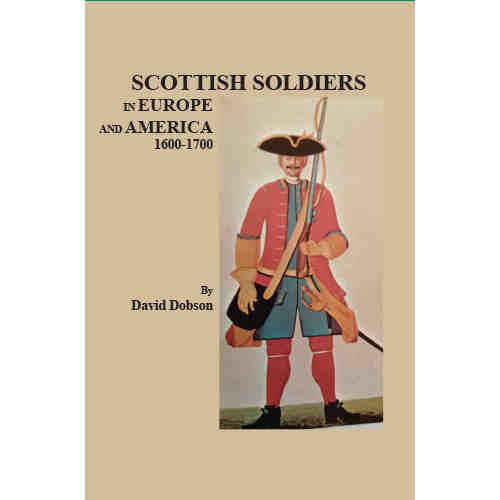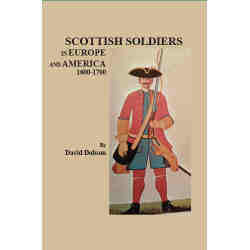At the beginning of the 17th century, Scotland had a relatively small standing army because the Union of the Crowns in 1603 had eliminated any military threat from England. At the same time, however, there were thousands of Scottish soldiers of fortune in Flanders and the Low Countries supporting the Calvinist Dutch in their struggle against Spain during the Dutch Revolt. In 1620 the Dutch sent 1,200 of their Scottish troops to help their Protestant allies in Bohemia. Sweden’s King Gustavus Adolphus began building his army around 1620, which had a significant Scottish element, between 20,000 and 30,000 men. The Swedish Army fought throughout northern Europe, particularly in Germany, Poland, and Russia. In the aftermath of the Thirty Years War, many Scots remained in foreign service or settled on the continent.
Since the medieval period Scottish soldiers could also be found in the service of France–for example, during the One Hundred Years War between France and England. The 17th century saw Scots soldiers fighting for or against France. In 1627 King Charles I sent 2,000 Scottish fighting men to aid the English in the defense of the Huguenot stronghold of La Rochelle, which was besieged by the French Army. Conversely, Scots Catholics could be found in French or Spanish armies of the period, such as those of Colonel Sir John Hepburn or Lord George Gordon, Captain in Chief of Company of Men at Arms in the Service of King Louis XIII of France in 1625.
The Wars of the Three Kingdoms, 1639-1651, involved Scottish soldiers in action in Scotland, England, and Ireland. Many Scottish soldiers, with years of military experience, returned from Europe to form the backbone of the Covenanter Army that opposed Charles I. The religious policies of King Charles I led to the Bishops Wars of 1639-1640, when the monarch unsuccessfully attempted to invade Scotland, and to the subsequent Scottish occupation of Newcastle, then the Irish Rising of 1641, followed by the English Civil War in 1642. Scottish soldiers participated in each of the latter upheavals.
The Jacobites were those who supported and fought for the return of the Stuarts to the thrones of England and Scotland from James II in 1688 until the death of Bonnie Prince Charlie in 1788. There were several Jacobite risings or rebellions in the British Isles during the late 17th century, notably in Ireland, ending in the Battle of the Boyne in 1690, and in Scotland, where the Battle of Killiecrankie was most significant.
By the end of the 17th century, the Scottish Military Establishment was working closely with its English counterpart. Scottish regiments would fight alongside English ones against common enemies–for example, in the War of the League of Augsburg in the 1690s, which ended with the Treaty of Ryswick in 1697. Several of the Scots soldiers, formerly fighting in Flanders, were recruited by the Scottish Darien Company to defend its settlement on the Isthmus of Panama.
The political union of Scotland and England led to the birth of the British Army and soon Scottish soldiers were fighting under the Duke of Marlborough at the Battle of Blenheim in Bavaria. The Union of 1707 increasingly provided opportunities under the British Crown for Scottish soldiers as the Empire expanded, so the appeal of service in continental armies declined.
This publication, based on original and secondary sources, identifies between 2,500 and 3,000 Scottish fighting men who served in a variety of military theaters in Europe and in the Americas. Dr. Dobson identifies each combatant by name, a location, a date, and the source, and in a number of cases by the names of next of kin, vessels traveled on, place of origin in Scotland, or other particulars.


